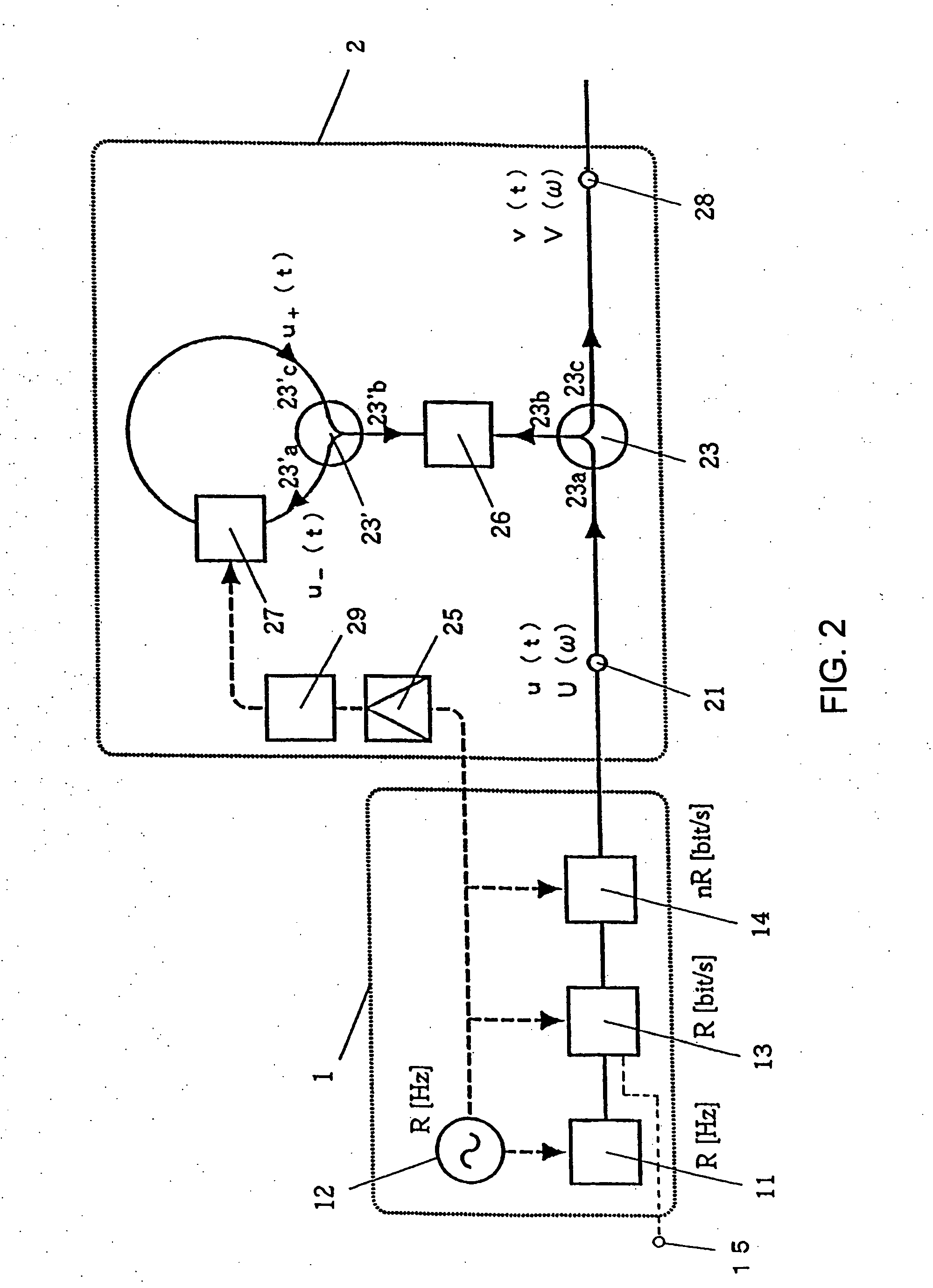Otdm transmission method and apparatus
a transmission method and optical time division multiplexing technology, applied in multiplex communication, orthogonal multiplex, frequency-division multiplex, etc., can solve the problems of inactive use of dispersion compensation techniques, and achieve the effect of small tolerance to the fundamental dispersion of transmission fibers, good effect on pulse transmission characteristics, and sufficient toleran
- Summary
- Abstract
- Description
- Claims
- Application Information
AI Technical Summary
Benefits of technology
Problems solved by technology
Method used
Image
Examples
first embodiment
2. OTDM Transmission Apparatus of a First Embodiment
[0037]FIG. 2 shows the configuration of the OTDM signal transmitter 1 and the optical Fourier transform circuit 2 of a first embodiment.
[0038] As shown in FIG. 2, the OTDM signal transmitter 1 includes an optical pulse light source 11, a clock signal source 12, an optical modulator 13, an OTDM multiplexer 14, and a data input terminal 15. The optical pulse light source 11 operates at a frequency of R (Hz) supplied from the clock signal source 12. The optical modulator 13 is driven by the clock signal supplied from the clock signal source 12 and modulates an optical pulse train having a base repetition frequency of R (Hz) to an optical pulse signal sequence of a transmission rate of R (b / s) in accordance with transmission data input from the data input terminal 15. The OTDM multiplexer 14 is driven by the clock signal supplied from the clock signal source 12, and time-division-multiplexes the optical pulse signal sequences of n cha...
second embodiment
3. OTDM Transmission Apparatus of a Second Embodiment
[0062] By exchanging the dispersion element 26 and the phase modulator 27 in the optical Fourier transform circuit 2 shown in FIG. 2, a similar optical Fourier transform circuit can be implemented (see patent document 2).
[0063]FIG. 3 is a diagram showing the configuration of the OTDM signal transmitter 1 and an optical Fourier transform circuit 20 of a second embodiment. The OTDM signal transmitter 1 is the same as in the first embodiment.
[0064] The optical Fourier transform circuit 20 includes an input terminal 21, optical circulators 23 and 23′, an electric amplifier 25, a dispersion element 26, a phase modulator 27, an output terminal 28, a multiplier or divider 29, and an optical delay element 30. The phase modulator 27 is driven in accordance with a clock signal supplied from the clock signal source 12 through the electric amplifier 25 and the multiplier or divider 29, and a phase modulation is applied to the pulse train in...
PUM
 Login to View More
Login to View More Abstract
Description
Claims
Application Information
 Login to View More
Login to View More - R&D
- Intellectual Property
- Life Sciences
- Materials
- Tech Scout
- Unparalleled Data Quality
- Higher Quality Content
- 60% Fewer Hallucinations
Browse by: Latest US Patents, China's latest patents, Technical Efficacy Thesaurus, Application Domain, Technology Topic, Popular Technical Reports.
© 2025 PatSnap. All rights reserved.Legal|Privacy policy|Modern Slavery Act Transparency Statement|Sitemap|About US| Contact US: help@patsnap.com



